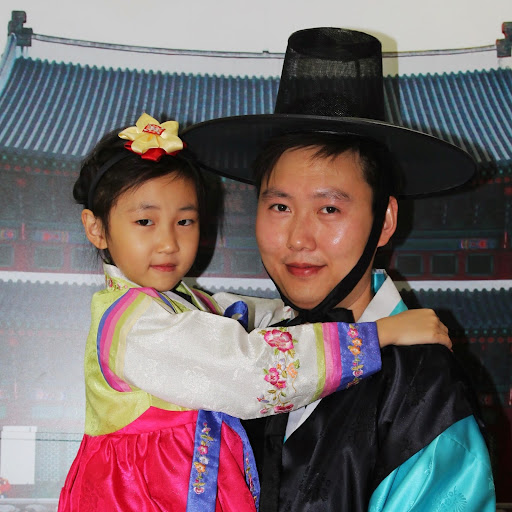Yin G Wong
age ~50
from Orinda, CA
- Also known as:
-
- Yin Gee Wong
- Yin Gee Te Wong
- Gee Wong Yin
- Yin W Chan
- Yong Yin
- Phone and address:
- 251 Monte Vista Ridge Rd, Orinda, CA 94563
Yin Wong Phones & Addresses
- 251 Monte Vista Ridge Rd, Orinda, CA 94563
- Alameda, CA
- 728 Mandana Blvd, Oakland, CA 94610
- 94 Monte Cresta Ave, Oakland, CA 94611
- Emeryville, CA
- Arlington, VA
- Orange, CT
- Berkeley, CA
Lawyers & Attorneys
Name / Title
Company / Classification
Phones & Addresses
2733 Diamond, LLC
Real Estate
Real Estate
171 Divisadero St, San Francisco, CA 94117
Chief Information Officer
The Hong Kong Special Administrative Region Government of
Administration of Economic & Trade Affairs
Administration of Economic & Trade Affairs
1520 18 St NW, Washington, DC 20036
(202)3311902
(202)3311902
President
CYBER REFINERY HOLDINGS, INC
2544 Bishop Ave, Fremont, CA 94536
Us Patents
-
Method And Apparatus For Organizing Information In A Computer System
view source -
US Patent:6613101, Sep 2, 2003
-
Filed:Feb 27, 2001
-
Appl. No.:09/796292
-
Inventors:Richard Mander - Palo Alto CA
Daniel E. Rose - San Jose CA
Gitta Salomon - Palo Alto CA
Yin Yin Wong - Menlo Park CA
Timothy Oren - Sunnyvale CA
Susan Booker - San Carlos CA
Stephanie Houde - Cambridge MA -
Assignee:Apple Computer, Inc. - Cupertino CA
-
International Classification:G06F 1700
-
US Classification:715526, 345810, 345345, 345866
-
Abstract:A method and apparatus for organizing information in a computer filing system. The method and apparatus include the creation of a pile comprising a collection of documents and displaying a graphical representation of the collection of documents. The method and apparatus further include browsing the collection of documents by pointing a cursor at a particular item in the collection of documents to reveal an indicia for the particular item in the collection of documents. The filing system can automatically divide a pile (e. g. a collection of documents from an electronic mail network) into subpiles on the basis of the content of each document in the pile, and the filing system, at the users request can automatically file away documents into existing piles in the computer system on the basis of a similarity match between the content (or other internal representation) of the document and the content (or other internal representation) of existing piles in the computer system. The filing system can also create a pile from a sample document by using the internal representation of the document as the internal representation of the new pile. The computer filing system provides various interfaces in connection with piles to the user of the system to provide feedback and other information to the user, including information concerning the documents and piles in the computers filing system.
-
Community-Based Shared Multiple Browser Environment
view source -
US Patent:6708172, Mar 16, 2004
-
Filed:Jun 14, 2000
-
Appl. No.:09/596305
-
Inventors:Yin Yin Wong - San Francisco CA
Baldo A. Faieta - San Francisco CA
Derek Chung - San Francisco CA
Ishantha Joseph Lokuge - Redwood City CA
Lalit Balchandani - San Francisco CA -
Assignee:Urbanpixel, Inc. - San Francisco CA
-
International Classification:G06F 1730
-
US Classification:707 10, 707 8, 345738, 345751, 345 13
-
Abstract:A web browsing environment that provides a graphical spatial context to associate web sites to one another and allows for interaction between users browsing the space is provided. One feature of the described embodiment is the provision of a tiling of mini browsers in one space rather than a document.
-
Interactive Memory Archive
view source -
US Patent:6760884, Jul 6, 2004
-
Filed:Dec 21, 1999
-
Appl. No.:09/468691
-
Inventors:Laurie J. Vertelney - Palo Alto CA
Baldo A. Faieta - San Francisco CA
Yin Yin Wong - San Francisco CA
Elaine Brechin - San Francisco CA
John P. Pinto - Palo Alto CA -
Assignee:Internal Research Corporation - Palo Alto CA
-
International Classification:G06F 1700
-
US Classification:7155001, 715530
-
Abstract:An authoring system and procedure for organizing photos (and other physical object types) are provided. Using the authoring system, an author organizes a set of physical objects into a particular story through an interface. Each physical object is associated with a specific identifier, such as a barcode, and the author uses an input device to scan identifiers of selected physical objects that are to be included within the particular story. The authoring process is performed off-line. Using the input device, the author adds her own commentary as part of building the story. For example, she can associate an audio clip with a particular physical object that makes up the story or with the entire story itself. In one embodiment, the input device includes a microphone for receiving voice input, as well as a barcode reader for scanning a particular barcode of a selected physical object. The author also selects one or more presentation styles that will be used to display the entire story.
-
Method And Apparatus For Organizing Information In A Computer System
view source -
US Patent:7849035, Dec 7, 2010
-
Filed:Jul 31, 2006
-
Appl. No.:11/497460
-
Inventors:Richard Mander - Palo Alto CA, US
Daniel E. Rose - San Jose CA, US
Gitta Salomon - Palo Alto CA, US
Yin Yin Wong - Menlo Park CA, US
Timothy Oren - Sunnyvale CA, US
Susan Booker - San Carlos CA, US
Stephanie Houde - Cambridge MA, US -
Assignee:Apple Inc. - Cupertino CA
-
International Classification:G06F 17/00
G06N 5/00 -
US Classification:706 45, 706 46, 706 60
-
Abstract:A method and apparatus for organizing information in a computer filing system. The method and apparatus include the creation of a pile comprising a collection of documents and displaying a graphical representation of the collection of documents. The method and apparatus further include browsing the collection of documents by pointing a cursor at a particular item in the collection of documents to reveal an indicia for the particular item in the collection of documents. The filing system can automatically divide a pile (e. g. a collection of documents from an electronic mail network) into subpiles on the basis of the content of each document in the pile, and the filing system, at the users request can automatically file away documents into existing piles in the computer system on the basis of a similarity match between the content (or other internal representation) of the document and the content (or other internal representation) of existing piles in the computer system. The filing system can also create a pile from a sample document by using the internal representation of the document as the internal representation of the new pile. The computer filing system provides various interfaces in connection with piles to the user of the system to provide feedback and other information to the user, including information concerning the documents and piles in the computer's filing system.
-
Method And Apparatus For Organizing Information In A Computer System
view source -
US Patent:7991720, Aug 2, 2011
-
Filed:Jun 25, 2003
-
Appl. No.:10/607085
-
Inventors:Richard Mander - Palo Alto CA, US
Daniel E. Rose - San Jose CA, US
Gitta Salomon - Palo Alto CA, US
Yin Yin Wong - Menlo Park CA, US
Timothy Oren - Sunnyvale CA, US
Susan Booker - San Carlos CA, US
Stephanie Houde - Cambridge MA, US -
Assignee:Apple Inc. - Cupertino CA
-
International Classification:G06F 17/00
G06N 5/00 -
US Classification:706 45, 706 20, 706 46
-
Abstract:A method and apparatus for organizing information in a computer filing system. The method and apparatus include the creation of a pile comprising a collection of documents and displaying a graphical representation of the collection of documents. The method and apparatus further include browsing the collection of documents by pointing a cursor at a particular item in the collection of documents to reveal an indicia for the particular item in the collection of documents. The filing system can automatically divide a pile (e. g. a collection of documents from an electronic mail network) into subpiles on the basis of the content of each document in the pile, and the filing system, at the user's request can automatically file away documents into existing piles in the computer system on the basis of a similarity match between the content (or other internal representation) of the document and the content (or other internal representation) of existing piles in the computer system. The filing system can also create a pile from a sample document by using the internal representation of the document as the internal representation of the new pile. The computer filing system provides various interfaces in connection with piles to the user of the system to provide feedback and other information to the user, including information concerning the documents and piles in the computer's filing system.
-
Contextual Access To Workflow Functionality
view source -
US Patent:8185453, May 22, 2012
-
Filed:Mar 21, 2006
-
Appl. No.:11/386581
-
Inventors:Aline Baeck - Sunnyvale CA, US
Roy Goldman - Cupertino CA, US
Lisa Holzhauser - San Carlos CA, US
Miriam Nga-Shun Vu - San Francisco CA, US
Yin Yin Wong - San Francisco CA, US
Karen Peacock - San Carlos CA, US -
Assignee:Intuit Inc. - Mountain View CA
-
International Classification:G07B 17/00
G06F 15/02
G06F 21/00
G07F 19/00 -
US Classification:705 30, 705 32, 705 34, 705 40
-
Abstract:Systems and methods provide access to features of a business management application at a contextually relevant locations within a global workflow. The system gathers data from various application features and user preferences and generates a global workflow diagram reflecting these data. The system and method provide contextual access to various features of the business management application, by way of nodes associated with their contextual location within the global workflow, allowing the user to view the information in its relevant context.
-
Intelligent Browser Windows In A Multi-Browser Environment
view source -
US Patent:20030014406, Jan 16, 2003
-
Filed:Jun 7, 2002
-
Appl. No.:10/165389
-
Inventors:Baldo Faieta - San Francisco CA, US
Lalit Balchandani - San Francisco CA, US
Derek Chung - San Francisco CA, US
Ishantha Lokuge - Pacheco CA, US
Yin Wong - San Francisco CA, US -
Assignee:URBANPIXEL INC. - SAN FRANCISCO CA
-
International Classification:G06F007/00
-
US Classification:707/005000
-
Abstract:The system described herein extends the server described in application Ser. No. 09/596,305 to allow the content of browser windows or the interaction of browser windows to affect other browser windows or to be affected by other browser windows. This system of linked browser windows allows intelligence to be added to the system specified in application Ser. No. 09/596,305. Changes affecting a browser window can now have ripple effects through the landscape for various uses, e.g., data can propagate more visibly, easily and transparently, “what-if” scenarios are possible, error and special conditions can be highlighted at a glance, etc.
-
Interactive Multi-Level Mapping In A Multiple Browser Environment
view source -
US Patent:20030043200, Mar 6, 2003
-
Filed:Aug 9, 2002
-
Appl. No.:10/216022
-
Inventors:Baldo Faieta - San Francisco CA, US
Yin Wong - San Francisco CA, US
Lalit Balchandani - San Francisco CA, US
Ishantha Lokuge - Pacheco CA, US
Derek Chung - San Francisco CA, US -
Assignee:URBANPIXEL INC - SAN FRANCISCO CA
-
International Classification:G09G005/00
-
US Classification:345/804000
-
Abstract:A web browsing environment that provides for visual and interactive mapping techniques to enable users to organize, visualize and navigate complex information spaces. The Urbanpixel system supports atomic units of information organized into a tiled browser environment. The system's mapping technology allows the information environment to be surfaced into a global, active map view. Because the system supports a process of data abstraction and the use of stylesheets to create multiple views, users can drill down on areas of interest to get views at multiple levels of detail and abstraction. The navigation model keeps a one-to-one spatial correspondence between the levels, making it easier for users to find their way around by providing spatial context at every level.
Resumes

Yin Wong
view source
Instructor - Mathnasium
view sourceWork:
Instructor - Mathnasium

Instructor - Mathnasium
view sourceWork:
Instructor - Mathnasium

Yin Wong
view source
Yin To Wong
view source
Research Associate At Kinemed, Inc
view sourceLocation:
San Francisco Bay Area
Industry:
Biotechnology

Economics Major At University Of California, Berkeley
view sourceLocation:
San Francisco Bay Area
Industry:
Financial Services
Youtube
Myspace
Plaxo

wong yin wai
view source
WONG Yuk Yin Miranda
view sourceHong Kong

Lu Yin Wong
view sourceNestle USA
Flickr

Yin Hiong Wong
view source
Yin Ming Wong
view source
Yin Shin Wong
view source
Yin Ping Wong
view source
Yin Heong Wong
view source
Yin Peng Wong
view source
Yin Loon Wong
view source
Yin Ping Wong
view sourceGoogleplus

Yin Wong
Work:
Mandarin house - Waiter (2012)
Education:
Richard Huish College

Yin Wong

Yin Wong

Yin Wong

Yin Wong

Yin Wong

Yin Wong

Yin Wong
Classmates

Yin Wong
view sourceSchools:
Marc Garneau High School North York Morocco 1996-2000
Community:
Patrick Sobel, Jason Ying, Carolyn Keller, Trish Ross

Tony / Shek-Yin Wong | In...
view source
Brookfield High School, O...
view sourceGraduates:
Jill Beckstead (1981-1985),
Chun Yin Wong (1983-1987),
Tank Brookfield (1985-1989)
Chun Yin Wong (1983-1987),
Tank Brookfield (1985-1989)

Yin pan Wong-ping | St. A...
view source
International High School...
view sourceGraduates:
yin Wong (1989-1993),
Jose Jimenez (1994-1998),
Lin Aung (1990-1993),
Yamileth Escobar (1986-1989),
Hanwook Ryu (1997-1999)
Jose Jimenez (1994-1998),
Lin Aung (1990-1993),
Yamileth Escobar (1986-1989),
Hanwook Ryu (1997-1999)

McGill University - Elect...
view sourceGraduates:
Chi Yin Wong (1979-1983)

Yin May Wong, Le Moyne Co...
view source
Florence Nightingale Juni...
view sourceGraduates:
Yin Wong (1976-1980),
Elizabeth Ochoa (1983-1986),
Jimmy Su (1997-2000)
Elizabeth Ochoa (1983-1986),
Jimmy Su (1997-2000)
Get Report for Yin G Wong from Orinda, CA, age ~50














